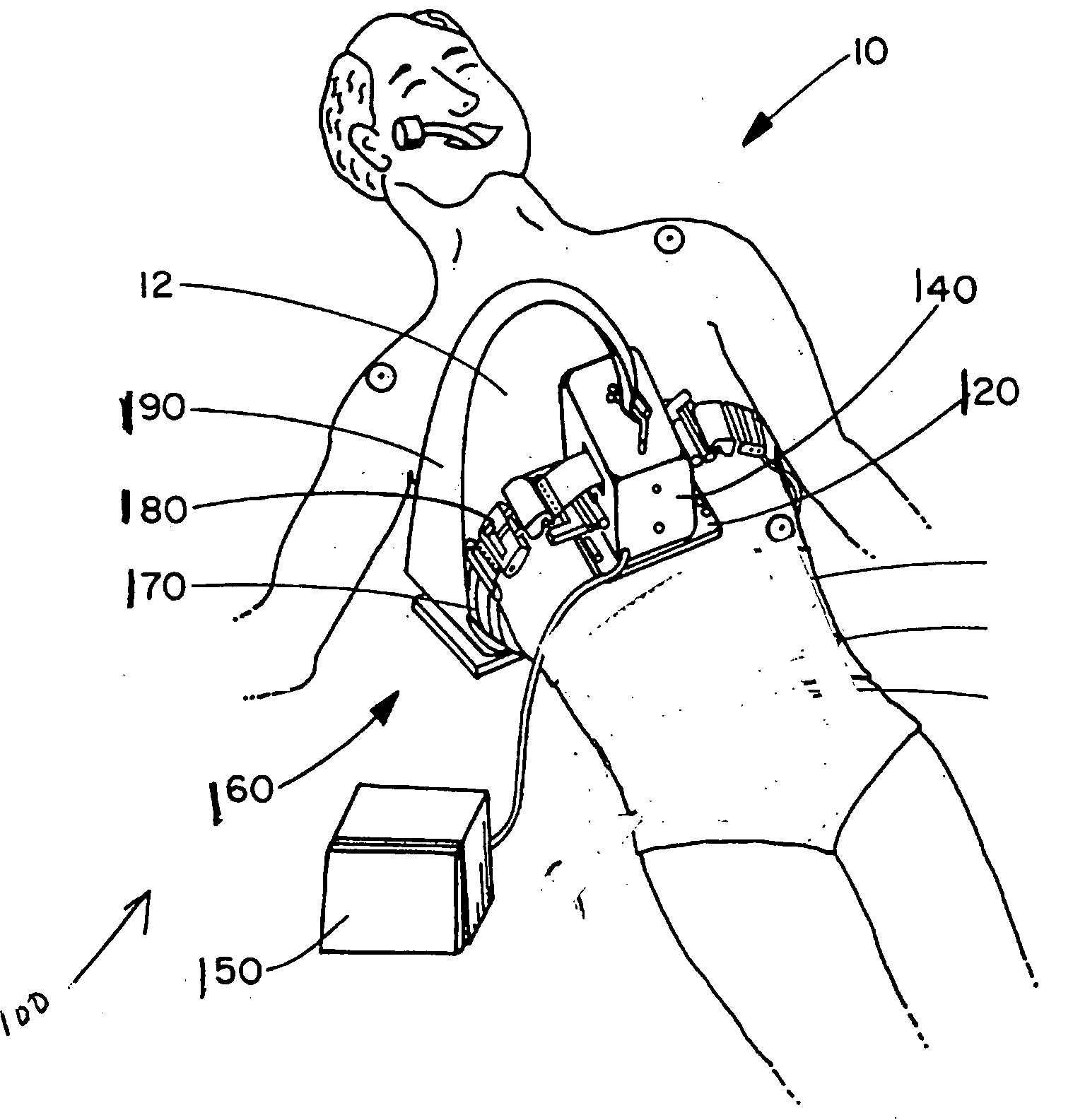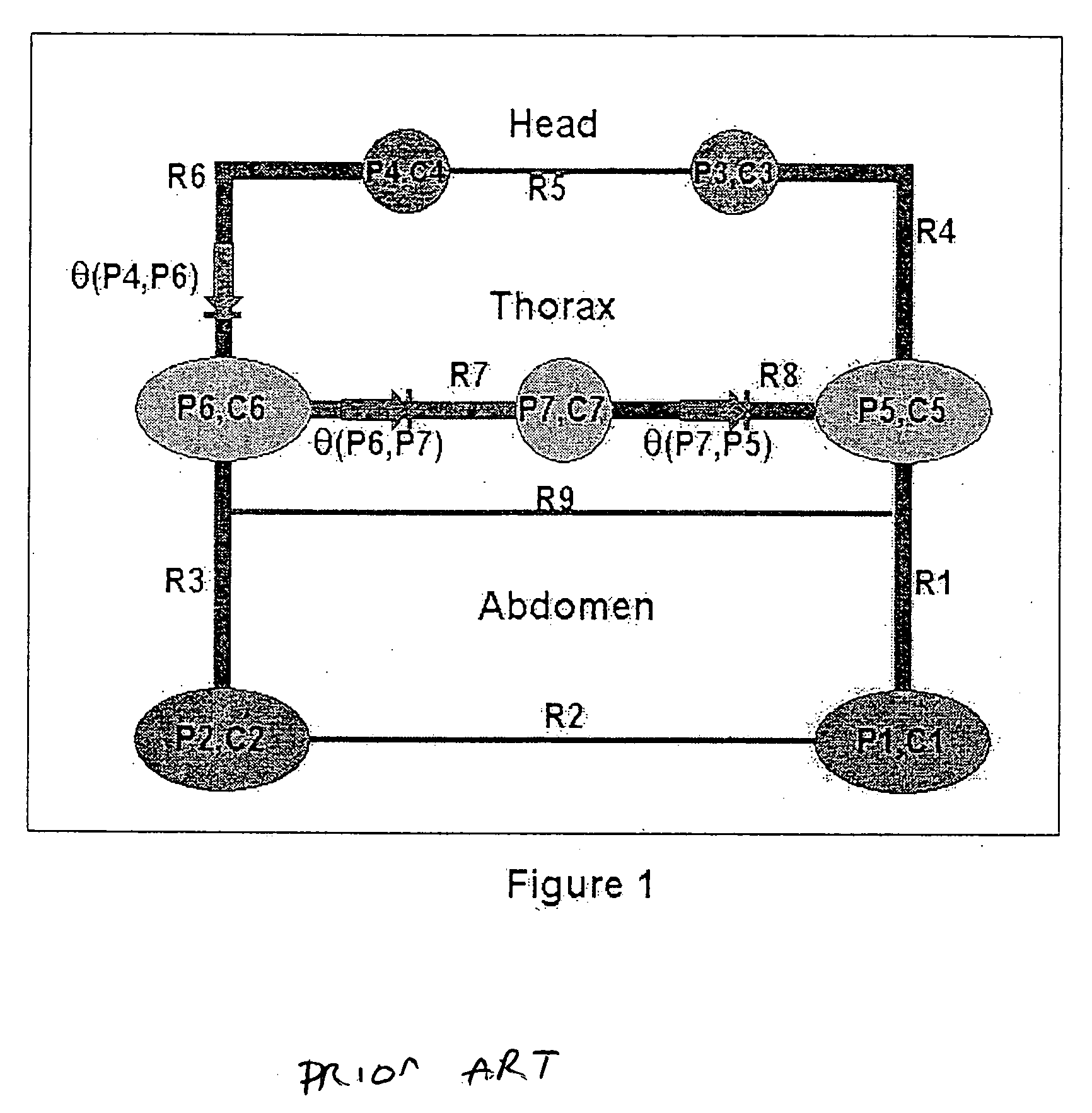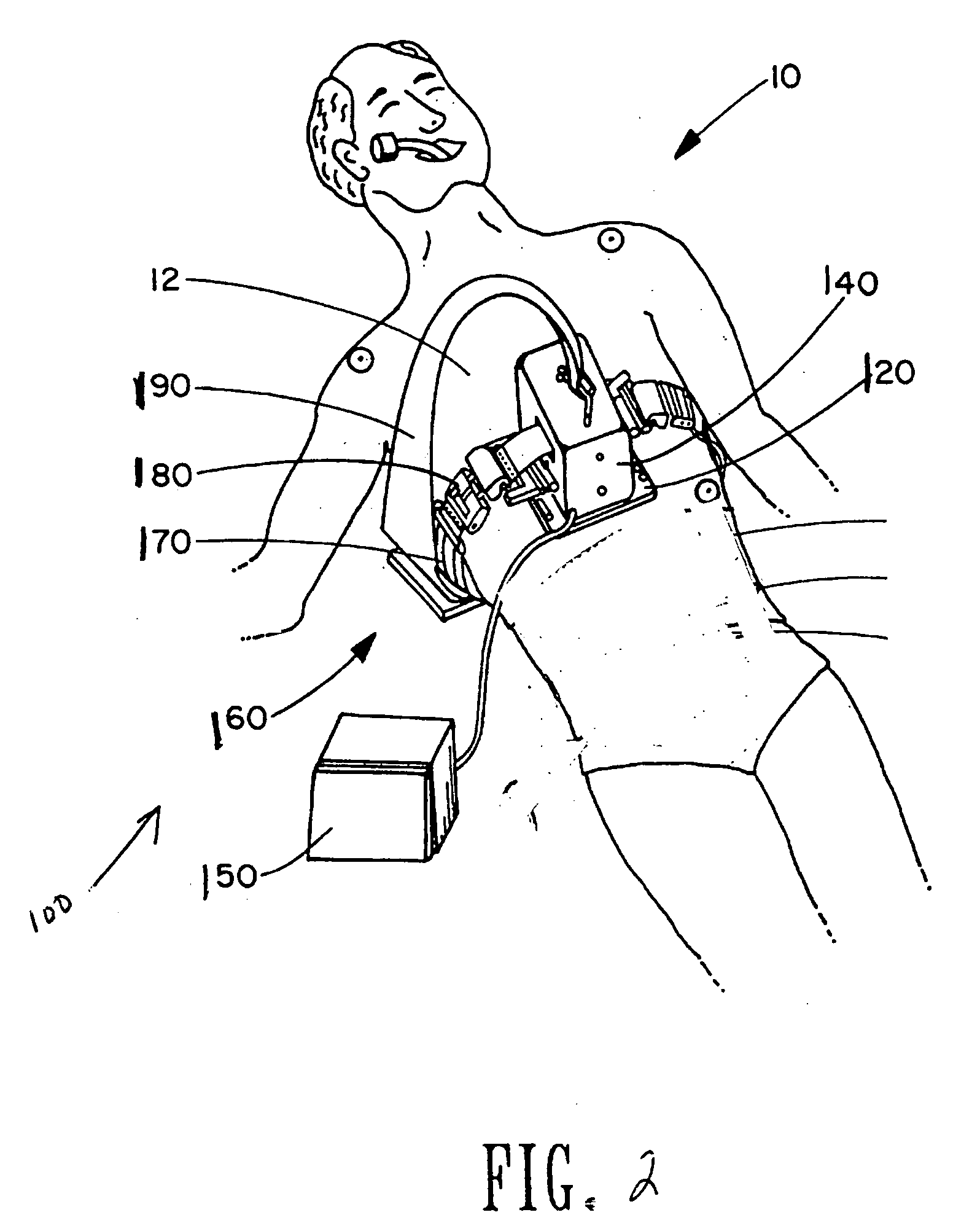Optimal control of CPR procedure
a cpr and optimal technology, applied in the field of cpr, can solve the problems of limited circulatory support, heart stoppage, brain cells beginning to suffer and die, etc., and achieve the effect of maximizing blood flow through the patien
- Summary
- Abstract
- Description
- Claims
- Application Information
AI Technical Summary
Benefits of technology
Problems solved by technology
Method used
Image
Examples
Embodiment Construction
[0019] A method for determining a chest pressure profile for cardiopulmonary resuscitation (CPR) includes the steps of representing a hemodynamic circulation model based on a plurality of difference equations for a patient, applying an optimal control (OC) algorithm to the circulation model, and determining a chest pressure profile. The chest pressure profile defines a timing pattern of externally pressure to be applied to the chest of the patient to maximize blood flow through the patient. The resulting chest pressure profile provides a time dependent (variable compression rate) pressure profile to be followed in the CPR process. Based on the invention, an increase of 20% or more in blood flow is estimated to generally result as compared to conventional fixed-compression rate (time-independent) CPR strategies. This significant increase in blood flow provided by the invention may represent the difference between life and death for a significant number of people who undergo cardiac a...
PUM
 Login to View More
Login to View More Abstract
Description
Claims
Application Information
 Login to View More
Login to View More - R&D
- Intellectual Property
- Life Sciences
- Materials
- Tech Scout
- Unparalleled Data Quality
- Higher Quality Content
- 60% Fewer Hallucinations
Browse by: Latest US Patents, China's latest patents, Technical Efficacy Thesaurus, Application Domain, Technology Topic, Popular Technical Reports.
© 2025 PatSnap. All rights reserved.Legal|Privacy policy|Modern Slavery Act Transparency Statement|Sitemap|About US| Contact US: help@patsnap.com



